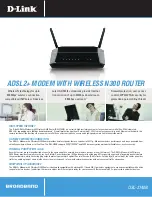
49
Help and Service Information
General Troubleshooting Tips
Modem is not detected on power-up:
•
Check your system BIOS IRQ assignments and make sure that at least
two
interrupts (especially any unused interrupts) have been assigned to the PCI bus.
Go to your system BIOS’s Setup routine and find the Plug-N-Play settings.
These settings can be found within the “Advanced”, “PNP/PCI Configuration”,
or “Plug and Play Configuration” sections depending on the BIOS manufacturer.
Next, verify that at least two IRQs have been set so that the PCI bus has access to
them (some BIOS don’t allow individual selection of interrupts to ISA, Plug-N-
Play, or PCI). These settings can be called ICU, ICU/PCI, PCI, or PNP
depending on your BIOS version and manufacturer. Do not set all the interrupts
to “ISA” only or to “Legacy ISA”. Pay attention to the IRQ usage of the other
peripherals in your system. Do not reassign an interrupt that is already in use by
an ISA card to the PCI bus.
•
Turn off the power and unplug the power cord from the system. Check that the
56K PCI Internal Call Waiting Modem is properly inserted into the PCI slot.
Remove the card and reinsert it if necessary.
•
Try inserting the PCI Modem into another PCI slot. The slot you are using may
have a problem. Try all available slots if necessary.
“No dialtone” error:
•
You may have too many devices connected to the phone line. Remove all other
equipment.
•
Your modem may not recognize the dial tone. Use the
AT%T19,0,nn
com-
mand or the Region Selection Program to reconfigure the modem’s Country
Setting.
Communications software does not work:
•
Some communication software packages need to be configured to the same COM
Port and/ or IRQ as the modem.
Nothing appears on the screen when I type In terminal mode:
•
Issue the command ATE1
to the modem to enable command echo. This will let
you see what you type.
Summary of Contents for 56K Internal PC Modem
Page 1: ...56K Internal PCI Call Waiting Modem User s Manual...
Page 55: ...55...
Page 56: ...56...
Page 57: ...57...









































